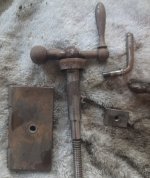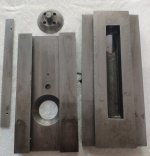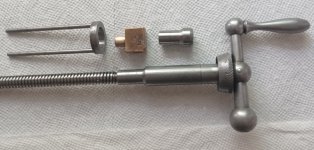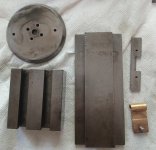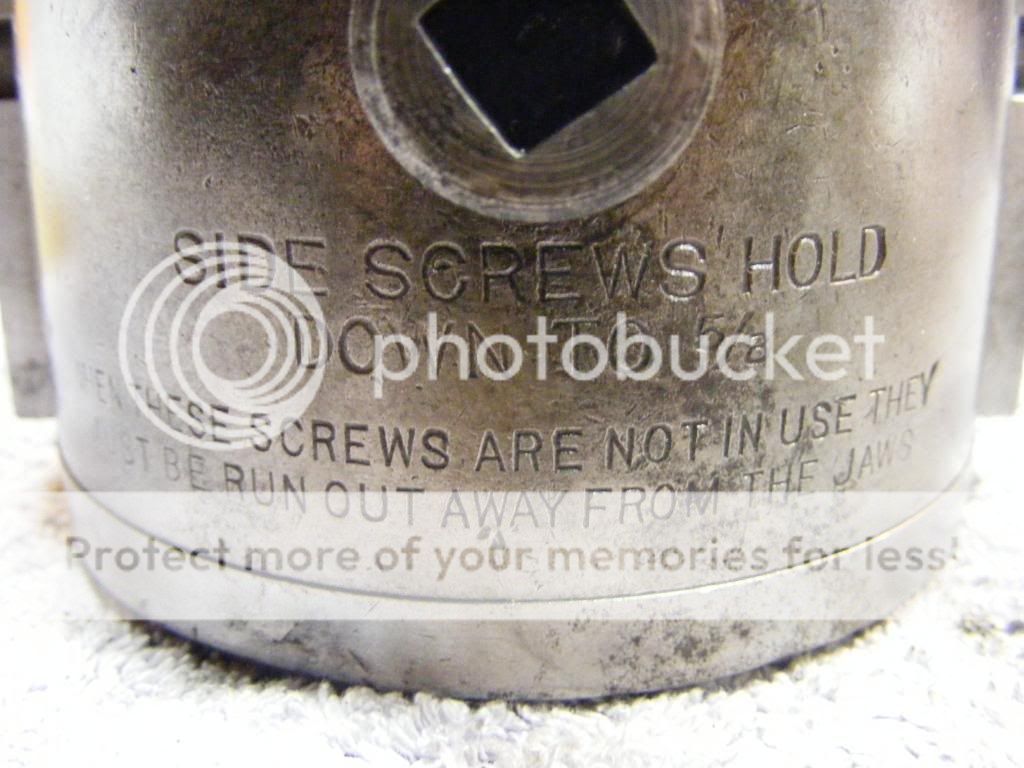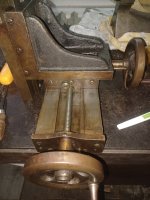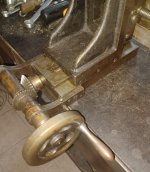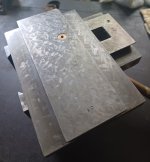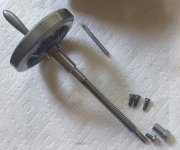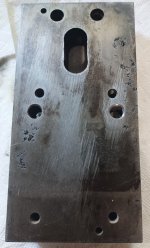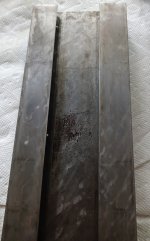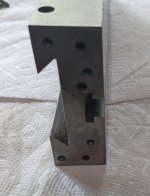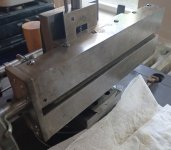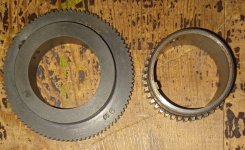MrStretch
Hot Rolled
- Joined
- Mar 20, 2017
Oh no, it's a combo machine thread!
See here for the seller's pics https://www.practicalmachinist.com/forum/threads/stark-lathe.403655/
This thread is about cleaning & repainting the lathe, an early Stark #4 with milling attachment, serial # 351.
The lathe appears to be in excellent mechanical condition and only shows some minor signs of abuse.

The finish is definitely original as most of it is missing. What looked like old repainting in the seller's pics turns out to be the various colors of the patina of the exposed cast iron and the remaining bits of the japanning. Also, It's not nearly as rusty as I expected. The only rust that I need to treat is on the crossslide handles, dials and the tailstock handles. The rest is either oil staining/patina or very light rust that will come off with oil & 0000 steel wool.

The bench and countershaft are absolute beasts! What looked like a normal shop-built angle iron bench was apparently made when giants walked the earth as it's made out of 2" x .25" angle iron. The countershaft weighs at least 80lbs and supplies the flat belt tension by leaning back slightly, pivoted on a pin at the bottom. It has fwd, neutral & reverse using the long lever at the top.

Does anybody recognize this? The motor is mounted to a pivoted plate directly underneath the countershaft in a way that suggest the two were made together.
The lathe is missing the entire threading attachment except a handful of forms & followers, which I knew before I bought it. This is generally not a problem as I've never needed to cut threads with a lathe, but the missing change wheels are also used with the dividing head.
If anybody knows the whereabouts of a set of orphaned Stark change wheels or maybe something I could adapt, please let me know.
See here for the seller's pics https://www.practicalmachinist.com/forum/threads/stark-lathe.403655/
This thread is about cleaning & repainting the lathe, an early Stark #4 with milling attachment, serial # 351.
The lathe appears to be in excellent mechanical condition and only shows some minor signs of abuse.

The finish is definitely original as most of it is missing. What looked like old repainting in the seller's pics turns out to be the various colors of the patina of the exposed cast iron and the remaining bits of the japanning. Also, It's not nearly as rusty as I expected. The only rust that I need to treat is on the crossslide handles, dials and the tailstock handles. The rest is either oil staining/patina or very light rust that will come off with oil & 0000 steel wool.

The bench and countershaft are absolute beasts! What looked like a normal shop-built angle iron bench was apparently made when giants walked the earth as it's made out of 2" x .25" angle iron. The countershaft weighs at least 80lbs and supplies the flat belt tension by leaning back slightly, pivoted on a pin at the bottom. It has fwd, neutral & reverse using the long lever at the top.

Does anybody recognize this? The motor is mounted to a pivoted plate directly underneath the countershaft in a way that suggest the two were made together.
The lathe is missing the entire threading attachment except a handful of forms & followers, which I knew before I bought it. This is generally not a problem as I've never needed to cut threads with a lathe, but the missing change wheels are also used with the dividing head.
If anybody knows the whereabouts of a set of orphaned Stark change wheels or maybe something I could adapt, please let me know.


